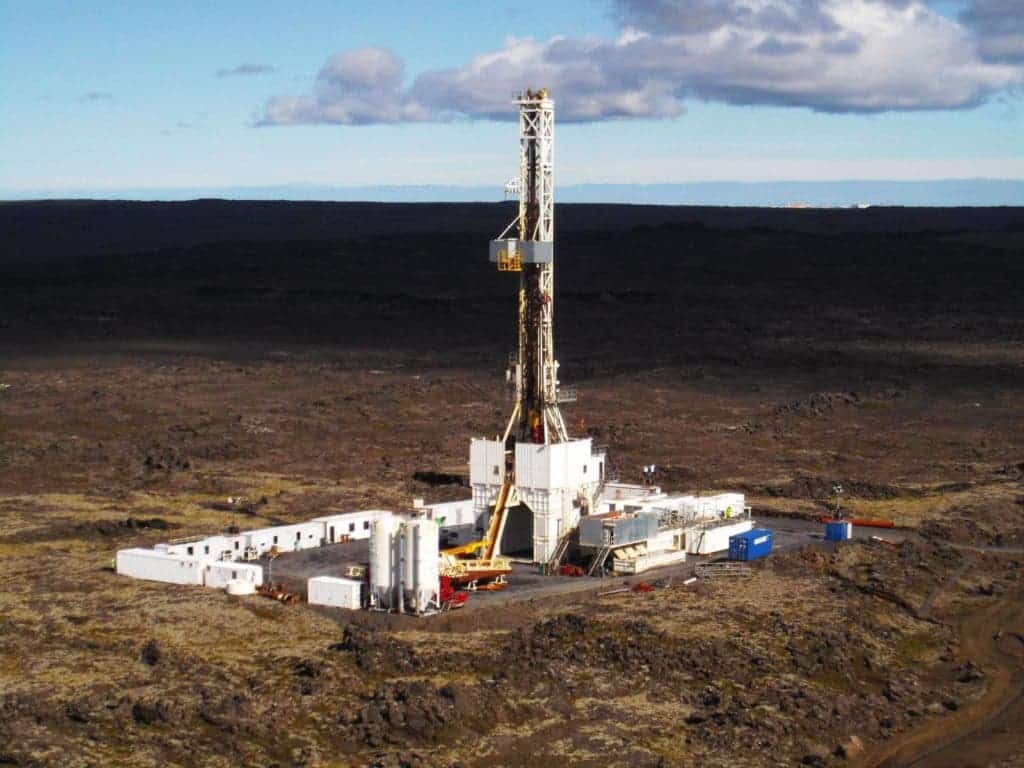A new geothermal drilling project in Iceland could produce ten times as much power as regular wells by tapping into the molten mantle of the planet.
While it may not look like it on the surface (especially now that fall is in full swing), the Earth is a very hot ball of space rock. Dig just a few kilometers under the surface, and you’ll hit temperatures high enough to make water boil. Dig deeper and at about 10 to 70 km (6 to 43 miles), depending on the kind of crust, you’ll find yourself in a place hot enough for rocks to stay molten all the time — the mantle. This is the stuff on which tectonic plates float on. This is where all the volcanoes in the world draw their lava from. And, ultimately, this is where all geothermal plants draw power from.
The hottest hole in the world
A new Icelandic project began on the 12th of August with the aim of supercharging geothermal energy production by drilling a 5 km (3.1 mile) deep hole in the Reykjanes area, southwest Iceland. This would bypass a thick layer of rocks (which aren’t very good thermal conductors) and allow engineers to draw power directly from magma systems that power the area’s lively subsurface volcanism. This may very well become the hottest hole in the world, with estimates placing temperatures anywhere between 400 and 1,000 degrees Celsius.
Called the Iceland Deep Drilling Project (IDDP), the goal is to drill all the way down to a landward extension of the Mid-Atlantic ridge — a major fissure between Earth’s tectonic plates — says Albert Albertsson, assistant director of HS Orka, an Icelandic geothermal energy company involved in the project. Here, magma heats water under the ocean’s floor. Pressures are incredibly high, around 200 atmospheres, which means that the researchers and companies behind the project will likely find the water as “supercritical steam”. It’s neither a liquid nor a gaseous state, sharing properties of both — but most importantly, it can store much more energy than either of those states.
“People have drilled into hard rock at this depth, but never before into a fluid system like this,” says Albertsson.
Albertsson said they’re expecting to find the land version of black smokers, underwater springs that run hot enough to dissolve metals such as gold or silver.
“If they can get supercritical steam in deep boreholes, that will make an order of magnitude difference to the amount of geothermal energy the wells can produce,” Arnar Guðmundsson from Invest in Iceland, a government agency that promotes energy development, told New Scientist.
The project’s idea of tapping sub-surface magma came back in 2009 when the IDDP (then drilling a conventional well) accidentally drilled into a molten rock reservoir about 2 km (1.25 miles). Just to see how much energy it could generate, the team poured water down the hole — and ended up producing 30 megawatts of power.
If this attempt is successful and proves to be more sustainable than the 2009 experiment, we could see a huge increase in geothermal energy output in areas with active volcanism, such as Japan or California. The drilling should be done by the end of the year, and in the following months, we’ll get to see just how much power it can churn out.
The project was short-lived, seeing as it was only ever set up as an experiment, but the team is hoping this new attempt will be more sustainable.
But before you get too excited, for now, this is all purely theoretical – we need to actually get the new well up and running first. The hole should be drilled by the end of the year, and in the months that follow, we’ll get an idea of how much electricity such a set-up can generate.










